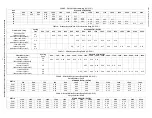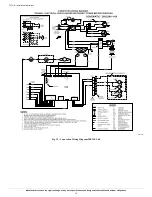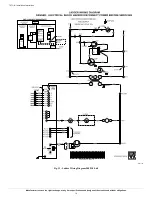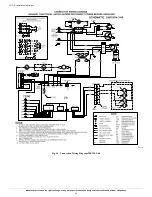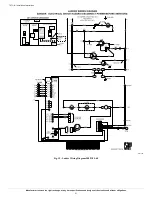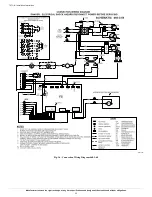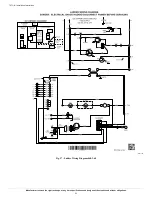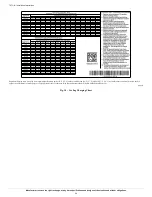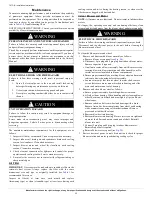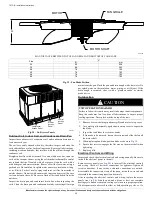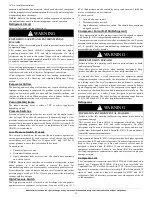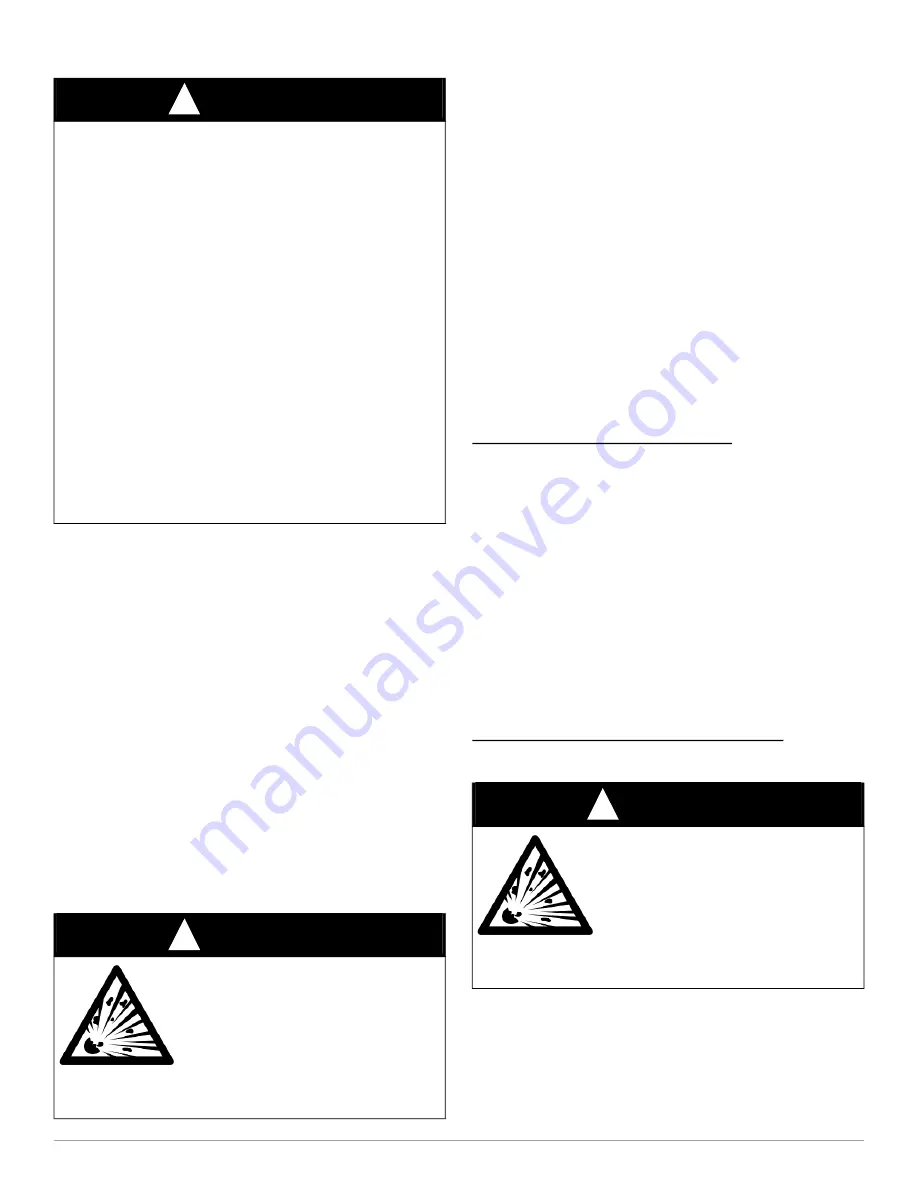
707C--K: Installation Instructions
Manufacturer reserves the right to change, at any time, specifications and designs without notice and without obligations.
12
Pre-Start-up
Proceed as follows to inspect and prepare the unit for initial start-up:
1. Remove all access panels (see
).
2. Read and follow instructions on all DANGER, WARNING,
CAUTION, and INFORMATION labels attached to, or shipped
with unit.
3. Make the following inspections:
a. Inspect for shipping and handling damages, such as broken lines,
loose parts, disconnected wires, etc.
b. Inspect all field- and factory-wiring connections. Be sure that
connections are completed and tight.
c. Ensure wires do not touch refrigerant tubing or sharp sheet metal
edges.
d. Inspect coil fins. If damaged during shipping and handling,
carefully straighten fins with a fin comb.
4. Verify the following conditions:
a. Make sure that condensate drain pan and trap are filled with
water to ensure proper drainage.
b. Make sure that all tools and miscellaneous loose parts have been
removed.
Start-up
Step 1 – Check for Refrigerant Leaks
Proceed as follows to locate and repair a refrigerant leak and to charge
the unit:
1. Locate leak and make sure that refrigerant system pressure has been
relieved and reclaimed from both high- and low-pressure ports.
2. Repair leak following accepted practices.
NOTE:
Install a filter drier whenever the system has been opened for
repair.
3. Add a small charge of Puron (R-410A) refrigerant vapor to system
and leak-test unit.
4. Recover refrigerant from system and evacuate to 500 microns if no
additional leaks are found.
5. Charge unit with Puron (R-410A) refrigerant, using an accurate
scale. Refer to unit rating plate for required charge.
Step 2 – Start-Up Cooling Section And Make
Adjustments
Complete the required procedures given in the Pre-Start-Up section
before starting the unit. Do not jumper any safety devices when
operating the unit. Do not operate the unit when the outdoor temperature
is below 40°F (4°C) (unless accessory low-ambient kit is installed). Do
not rapid cycle the compressor. Allow 5 minutes between “on” cycles to
prevent compressor damage.
Checking Cooling Control Operation
Start and check the unit for proper cooling control operation as follows:
1. Place room thermostat SYSTEM switch in OFF position. Observe
that blower motor starts when FAN switch is placed in ON position
and shuts down when FAN switch is placed in AUTO position.
2. Place SYSTEM switch in COOL position and FAN switch in
AUTO position. Set cooling control below room temperature.
Observe that compressor, condenser fan, and evaporator blower
motors start. Observe that compressor and outdoor fan shut down
when control setting is satisfied and that indoor blower shuts down
after 90 second fan time delay expires.
IMPORTANT:
Three-phase, scroll compressors are direction oriented.
Unit must be checked to ensure proper compressor 3-phase power lead
orientation. If not corrected within 5 minutes, the internal protector will
shut off the compressor. The 3-phase power leads to the unit must be
reversed to correct rotation. When turning backwards, the difference
between compressor suction and discharge pressures may be minimal.
Checking and Adjusting Refrigerant Charge
The refrigerant system is fully charged with Puron (R-410A)refrigerant
and is tested and factory sealed.
NOTE:
Adjustment of the refrigerant charge is not required unless the
unit is suspected of not having the proper Puron (R-410A) charge.
NOTE:
Some units have fixed orifice refrigerant metering devices.
There is a different charging procedure for both expansion devices.
Refer to the correct procedure for your unit.
The charging label and the tables shown refer to system temperatures
and pressures in cooling mode only. A refrigerant charging label is
WARNING
!
ENVIRONMENTAL, FIRE, EXPLOSION, ELECTRICAL
SHOCK HAZARD
Failure to follow this warning could result in personal injury or death
and/or property damage.
1. Follow recognized safety practices and wear protective goggles
when checking or servicing refrigerant system.
2. Relieve and recover all refrigerant from system before touching
or disturbing compressor plug if refrigerant leak is suspected
around compressor terminals.
3. Never attempt to repair soldered connection while refrigerant
system is under pressure.
4. Do not use torch to remove any component. System contains oil
and refrigerant under pressure.
5. To remove a component, wear protective goggles and proceed
as follows:
a. Shut off electrical power to unit and install lockout tag.
b. Relieve and reclaim all refrigerant from system using both high-
and low-pressure ports.
c. Cut component connecting tubing with tubing cutter and
remove component from unit.
d. Carefully unsweat remaining tubing stubs when necessary. Oil
can ignite when exposed to torch flame.
WARNING
!
EXPLOSION HAZARD
Failure to follow this warning could result in
death, serious personal injury, and/or property
damage.
Never use air or gases containing oxygen for
leak testing or operating refrigerant
compressors. Pressurized mixtures of air or
gases containing oxygen can lead to an
explosion.
WARNING
!
EXPLOSION HAZARD
Failure to follow this warning could result in
death, serious personal injury, and/or property
damage.
Never use air or gases containing oxygen for
leak testing or operating refrigerant
compressors. Pressurized mixtures of air or
gases containing oxygen can lead to an
explosion.

















